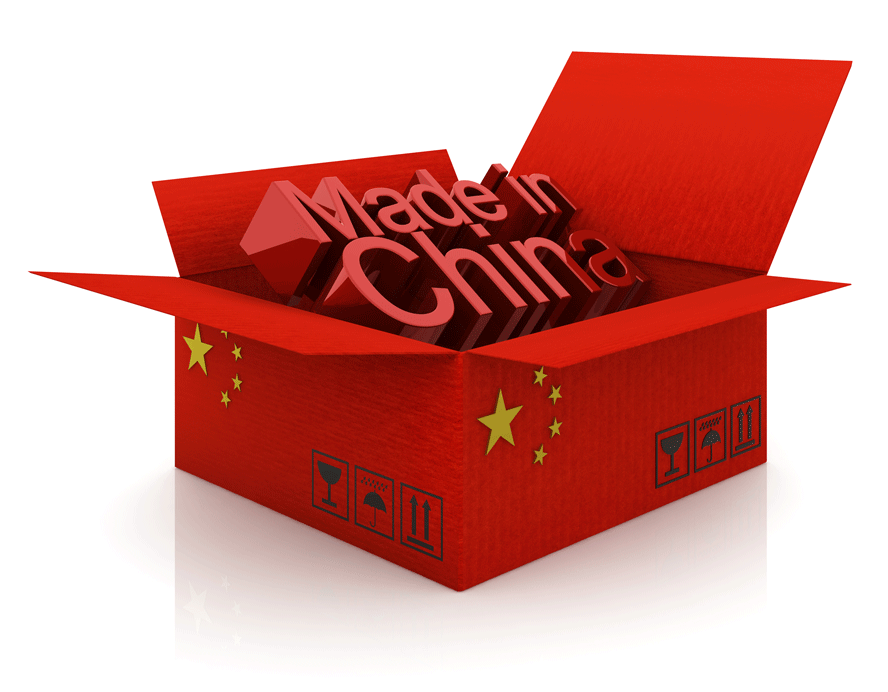 When China overtook Japan as the world’s second largest economy in 2011, labour shortages and rising wages were starting to emerge as serious concerns – many foreign and domestic manufacturers, still shaken by the 2008 financial crisis, started to suffer from the increasing costs of their Made in China production operations. Some enterprises chose to relocate to new, emerging Asian countries while others, like Foxconn, set in motion their plans to substitute human workers with robots, and automated their manufacturing systems. Rosanna Terminio of AsecorpChina, looks how this trend spurred China to develop its China Manufacturing 2025 initiative. She says that European companies must resist the urge to throw themselves headlong into investing in this plan before they have thoroughly taken stock of the reality.
When China overtook Japan as the world’s second largest economy in 2011, labour shortages and rising wages were starting to emerge as serious concerns – many foreign and domestic manufacturers, still shaken by the 2008 financial crisis, started to suffer from the increasing costs of their Made in China production operations. Some enterprises chose to relocate to new, emerging Asian countries while others, like Foxconn, set in motion their plans to substitute human workers with robots, and automated their manufacturing systems. Rosanna Terminio of AsecorpChina, looks how this trend spurred China to develop its China Manufacturing 2025 initiative. She says that European companies must resist the urge to throw themselves headlong into investing in this plan before they have thoroughly taken stock of the reality.
The financial crisis served to emphasise just how strong the ties are that link our global economic system and profoundly impacted China’s export-driven economy. Responding to this event, China’s 12th Five-Year Plan, issued in 2011, set out the ambition to shift to a domestically-driven economy as a key goal for the country’s future development. This implied, for the first time, a serious interest in upgrading the low-cost/low-quality value chain with innovation and technology and included the first call for the development of “indigenous innovation”.[1]
Also in response to the financial crisis, a number of innovation-driven economies scaled up investment in research and development (R&D) in different fields. The ensuing developments in IT, robotics and automation worldwide gave rise to hope that there would be a re-settlement of a wider manufacturing base back in USA and Europe, boosting their economies and resulting in job creation.[2] Germany was the first to connect the dots and launch a project to promote a High-Tech Strategy 2020 Action Plan in November 2011.[3] In October 2012, as part of this plan, an Industry 4.0 Working Group was created. Several national industry leaders developed guidelines[4] to promote the 4th Industrial Revolution based on a ‘smart factory’ concept centred around so-called cyber physical systems (CPS).[5]
A CPS is the integration of “computation, networking, and physical processes…CPS integrates the dynamics of the physical processes with those of the software and networking, providing abstractions and modeling, design, and analysis techniques for the integrated whole.”[6] We can only imagine, then, the huge impact that would result from the integration of CPS cloud technologies managing big data. It is this integration that has been defined in Germany as Industry 4.0. Following this trend, in 2014, the European Union launched Horizon 2020, an initiative aimed at accelerating the modernisation of European companies by funding innovation-driven projects until 2020.
A report released by the CRO Forum in December 2015, defines smart factories as “the convergence of the virtual and physical world…This integrates artificial intelligence, machine learning, automation of knowledge work and machine-to-machine communication with the manufacturing process.”[7] The Internet of Things (IoT) will contribute to the creation of a dynamic ecosystem where things that were once ‘silent’ will provide a massive amount of information and where there will be increasing interaction between the biological (humans) and the artificial (machines). All state-of-the-art technologies will converge and be integrated in the new factory.
The original vision of this automation trend was to allow production to take place closer to the final market, thanks to a reduction of labour-related costs. For China, this represented a threat to its future development and stability. Chinese leaders realised that the country urgently needed a strong transformation of their domestic industries to keep up or stay ahead.
In May 2015 China launched the 10-year plan known as China Manufacturing 2025 (CM2025) to promote industrial modernisation and a comprehensive upgrading of domestic manufacturing systems, supported by the plan known as Internet+.[8] The China 2025 plan identifies ten major fields as priorities: new advanced information technologies; automated machine tools and robotics; aerospace and aeronautical equipment; maritime equipment and modern shipping; new-energy vehicles and equipment; power equipment; agricultural equipment; new materials; and biopharma and advanced medical products.
Intelligent manufacturing (based on the concepts of CPSs, the IoT and the Internet of Services) will be the major contributor to China reaching its goals to become a technology leader. Germany and its Industry 4.0 concept is considered the model to follow. It is expected that this will help Chinese manufacturers to increase efficiency, while producing higher quality goods at lower costs. In this sense China and Germany are already cooperating both as trade partners and in technology transfer projects.
 At present, CM2025 is still just a general framework which lacks full integration within the different ministries and administrations, both at national and local level. Some key dates have been identified, though, which extends the life of the plan well beyond 2025: upgrade China’s industrial base by 2025; realise the ability to compete globally with main players by 2035; be a world-leading manufacturing nation by 2049. China’s 13th Five-Year Plan, which covers the period 2016–2020, further promotes innovation as a means to supporting a greener development of the economy and the overall wellbeing of the population: the ‘Chinese Dream’.
At present, CM2025 is still just a general framework which lacks full integration within the different ministries and administrations, both at national and local level. Some key dates have been identified, though, which extends the life of the plan well beyond 2025: upgrade China’s industrial base by 2025; realise the ability to compete globally with main players by 2035; be a world-leading manufacturing nation by 2049. China’s 13th Five-Year Plan, which covers the period 2016–2020, further promotes innovation as a means to supporting a greener development of the economy and the overall wellbeing of the population: the ‘Chinese Dream’.
This initiative should involve China’s industrial sectors in all its fields and cover processes, standards, systems, methodologies and human resources education. A change in management mind-set, which hasn’t yet progressed from a traditional short-term, cost-control approach toward a long-term cost/quality balance, is also necessary. The main challenges that China will face are related to the fact that most of the technologies required for this modernisation must be imported and the scale of investment in R&D that is required is still out of reach for many local manufacturers. Further opening up will also be necessary for China to successfully create an environment that stimulates innovation. This gives European companies and professionals a competitive advantage to become preferential partners for Chinese manufacturers in their race toward modernisation: China needs us now to upgrade and learn.
However, this is potentially a dangerous path to follow for European countries if it is not taken with a balanced compromise with respect to roles and responsibilities. We should not forget that the ultimate goal of CM2025 is to promote indigenous (meaning Chinese) innovation and become a global manufacturing leader in innovation by 2049.[9] Improving access to data and internet speed, as well as a number of cyber security concerns, are also major concerns that need to be addressed, together with a real enforcement of intellectual property laws and ethical practices. At the same time, European companies—and countries—should not be solely motivated by headlines and a hunger for short-terms profit. Making a conscious and strategic decision is necessary; continuous innovation must become a main priority for European companies if they don’t want to be out of the game by 2049. For evidence of this, we only need remind ourselves of the increasing international competition of Chinese railway manufacturers.
AsecorpChina is a strategic advisory firm with 10 years presence in China. We cover three main areas of advisory: market access and investment, administrative/operational procedure design and supervision, and human resources and organisational strategy. Trust, personal approach and flexibility are what makes us our European clients’ choice for the different transition stages of their China ventures.
[1] http://www.britishchamber.cn/content/chinas-twelfth-five-year-plan-2011-2015-full-english-version
[2] http://www.innovation-prime.com/the-rise-of-smart-factories-in-the-us/
[3] http://www.wired.co.uk/article/factory-of-the-future
[4]http://www.acatech.de/fileadmin/user_upload/Baumstruktur_nach_Website/Acatech/root/de/Material_fuer_Sonderseiten/Industrie_4.0/Final_report__Industrie_4.0_accessible.pdf
[5] http://www.belden.com/blog/industrialethernet/The-Smart-Factory-of-the-Future-Part-1.cfm
[6] http://cyberphysicalsystems.org/
[7] http://www.agcs.allianz.com/assets/PDFs/risk%20bulletins/CROF-ERI-2015-The-Smart-Factory.pdf
[8] The application of Internet based technology to all industry fields.
[9] The 100th anniversary of PRC foundation and the estimated time for a significant pick in labour shortage.


Recent Comments